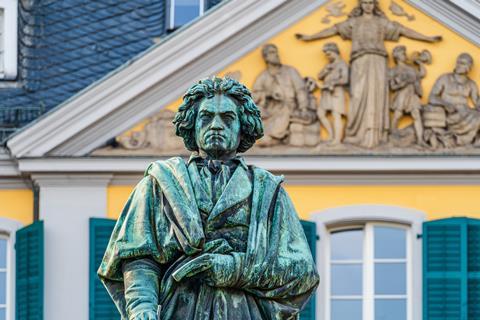Norman Werbner, programme director of the Florida Keys Concert Association in the US, argues an intriguing case for a different way of performing Beethoven’s String Quartet op.135

Discover more Featured Stories like this in The Strad Playing Hub
Read more premium content for subscribers here
String quartets: when you next perform the Beethoven op.135, I propose you consider doing something quite radical – end with the third movement, perhaps by reversing the order of the last two movements.
I should say that I am neither a musician nor a musicologist. I am simply an avid music lover. Before I give you a possible academic justification for my proposal, let me tell you my aesthetic reason. The first time I heard op.135 was on the radio. The announcer said it was Beethoven’s final official work (the replacement for the Grosse Fuge being excepted). When I was listening to the gorgeous third movement, I felt that Beethoven was saying goodbye to us. It brought me to tears. I assumed that was the end of the piece, but then followed the fourth movement. I was truly offended. For me, the movement quickly disintegrated into something quite trite, and I couldn’t believe that Beethoven would end the piece that way. I wondered if he might have been coerced into adding the fourth movement so as to end the quartet with bravado and applause.
Years later, this thought again came to my mind. I wondered if op.135 had ever been performed with the third movement as the conclusion. A search on the web gave no indication that it had, but the results did bring up an intriguing quotation – a touching note that Beethoven sent to the publisher along with the final manuscript for op.135:
Here, my dear friend, is my last quartet. It will be the last; and indeed it has given me much trouble. For I could not bring myself to compose the last movement. But as your letters were reminding me of it, in the end I decided to compose it. And that is the reason why I have written the motto: ‘The difficult decision – Must it be? – It must be, it must be!’
I think this is possible evidence that Beethoven wanted to end with the third movement; but that in submitting to his publisher’s demands, he threw in a fourth movement.
I think there is evidence that Beethoven wanted to end with the third movement
Then there is the speculation about the meaning of ‘Must it be?’ and ‘It must be!’ I want to throw in my own proposition regarding what Beethoven may have meant. The music behind ‘Must it be?’ is dark and angry; Beethoven could have been saying, ‘Do I really have to write a happy heroic finale?’ Then with ‘It must be!’ he might have been saying, ‘Yes, I guess I am forced to write some happy little tunes to end with, and here they are.’
In January 2023, the Escher Quartet visited the Florida Keys to perform two concerts in our series. I proposed to the musicians that they play the op.135 and invert the last two movements. I gave them my logic and they agreed to do it. It went down well with the audience. After the concert I received some comments and all were positive. One person echoed my own initial feelings when she said: ‘Why would anyone want to hear anything after that third movement!’
I feel that audiences everywhere would benefit from this inversion. The arguable interpretation of Beethoven’s comment presented above is for those who feel that an academic justification is needed in order to consider such a change. I do hope that this new way of presenting the magnificent op.135 will be attempted again.
I would be interested to learn if this suggestion should resonate with any string quartet. If you decide to perform the op.135 to end with the third movement, I would very much like to know about it. You can email me at nonnie9611@aol.com.
Read: Masterclass: Beethoven Grosse Fuge op.133 (part one)
Watch: Epic Beethoven: Malion Quartet perform the Grosse Fuge
Discover more Featured Stories like this in The Strad Playing Hub
Read more premium content for subscribers here
The number one source for playing and teaching books, guides, CDs, calendars and back issues of the magazine.
In The Best of Technique you’ll discover the top playing tips of the world’s leading string players and teachers. It’s packed full of exercises for students, plus examples from the standard repertoire to show you how to integrate the technique into your playing.
The Strad’s Masterclass series brings together the finest string players with some of the greatest string works ever written. Always one of our most popular sections, Masterclass has been an invaluable aid to aspiring soloists, chamber musicians and string teachers since the 1990s.
This year’s calendar celebrates the top instruments played by members of the Australian Chamber Orchestra, Melbourne Symphony, Australian String Quartet and some of the country’s greatest soloists.






































2 Readers' comments